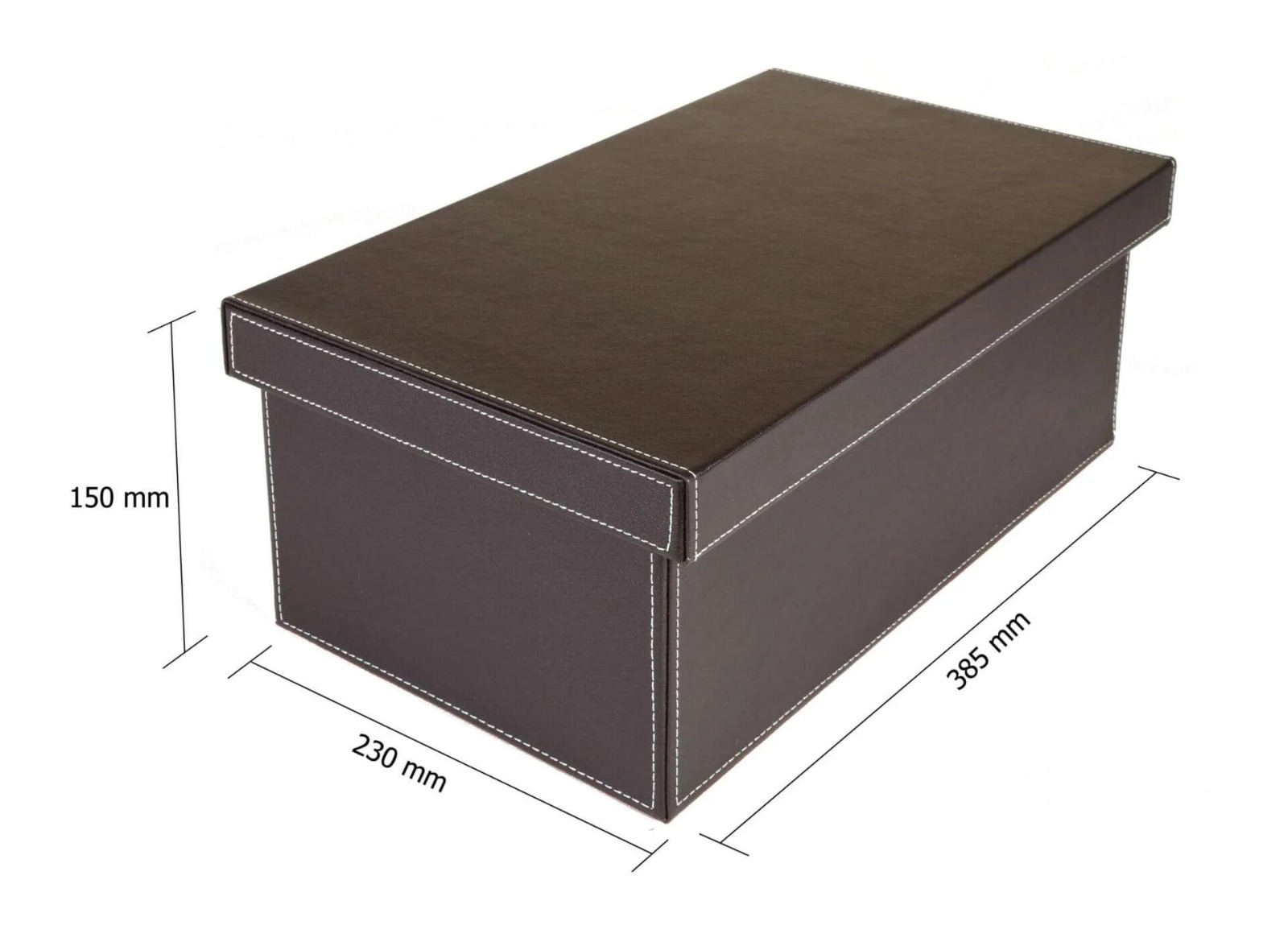When it comes to packaging, storing, or shipping shoes, the shoe box dimensions are a crucial element to consider. Understanding the standard shoe box size, its average dimensions, and how to pick the right one for your needs can save you time, space, and money. In this ultimate guide, we will explore everything you need to know about shoe box sizes and dimensions, helping you make informed decisions whether you’re a retailer, seller, or simply someone trying to organize their shoes effectively at home.
What Are Shoe Box Dimensions?
Shoe box dimensions refer to the specific measurements of a box designed to hold a pair of shoes. These dimensions typically account for the length, width, and height of the box. The size of the box can vary depending on the type of shoes being packaged, the brand, and the intended use (such as shipping or storage).
For example, running shoes, sneakers, or formal shoes will all have slightly different box sizes depending on their design and the space required to keep them in good condition.
Standard Shoe Box Size in CM
While shoe box sizes can vary, there is a generally accepted standard shoe box size in cm for adult shoes. For most adult shoes, the standard shoe box size tends to fall within these general measurements:
- Length: 33 – 34 cm
- Width: 20 – 21 cm
- Height: 12 – 14 cm
These dimensions of a shoebox are designed to comfortably fit a pair of shoes without too much extra space, keeping them secure but not overly cramped. The length typically accommodates the length of an adult shoe, while the width and height ensure that the shoes stay in place without shifting or getting damaged.
However, it is important to note that shoe box size can differ slightly based on the brand or style of the shoes. For example, boots or high-top shoes might require a taller box, and children’s shoes usually come in smaller boxes.
Average Size of a Shoe Box
The average size of a shoe box can depend on several factors, such as shoe type, age group, and geographical region. In general, most standard adult shoes will fit into boxes around the following average dimensions:
- Length: 33 cm
- Width: 21 cm
- Height: 13 cm
This is considered a typical box size for men’s and women’s shoes. However, as mentioned earlier, different shoe styles may require specific adjustments to these measurements. For instance, a women’s ballet flat will typically require a smaller box than men’s hiking boots, which might need a larger box with more height.
Types of Shoe Boxes
Shoe boxes are available in several different shapes and sizes depending on the purpose and the type of shoes being stored. The most common types of shoe boxes include:
Standard Shoe Box
The standard shoe box is the most commonly used type and is used for everyday shoes such as sneakers, flats, or casual shoes. These boxes are typically rectangular, with dimensions that comfortably fit most adult footwear. Their versatility makes them a popular choice for retail and storage.
Boot Box
Boot boxes are larger and taller to accommodate the extra height of boots. These boxes typically measure between 35 to 40 cm in length, 20 to 25 cm in width, and 15 to 20 cm in height, depending on the style of the boot. They offer extra space to ensure boots are stored properly without being squashed or damaged.
Men’s and Women’s Shoe Box Sizes
While standard shoe boxes are fairly universal, men’s shoes generally require slightly larger boxes compared to women’s shoes, especially if the shoes are larger or bulkier. Men’s shoes tend to require a box that is about 34 cm long, 22 cm wide, and 14 cm high, while women’s shoes may fit in a box that is slightly smaller, typically around 32 cm long, 20 cm wide, and 12 cm high.
Children’s Shoe Box
For children’s shoes, the shoe box dimensions are significantly smaller. The average size of a shoe box for kids’ shoes typically ranges from 22 cm to 28 cm in length, 12 cm to 18 cm in width, and 8 cm to 12 cm in height. These dimensions are ideal for smaller shoes while providing enough space for growth.
Specialty Shoe Boxes
Some shoe boxes are designed for specific shoe styles, such as high heels, athletic shoes, or designer footwear. These boxes may feature custom dimensions to protect the unique shape of the shoes. For instance, high heels may be packaged in a taller box to avoid crushing the heel.
Factors That Affect Shoe Box Size
Several factors influence the dimensions of a shoebox. Here are some key elements to consider when determining the size of the shoe box:
Shoe Type
The style of the shoe you are packing will significantly affect the box size. Larger and bulkier shoes, such as boots, sneakers, and heels, require more space than flats or sandals. A shoe box should always provide adequate room for the shoes without leaving excessive empty space, which can lead to damage during shipping or storage.
Brand and Packaging Preferences
Different brands have specific packaging preferences that can influence the box dimensions. Some brands may opt for slightly larger boxes for a premium feel, while others may choose a more compact design to save on materials and shipping costs. If you’re in retail or e-commerce, be sure to check with the brand’s specifications for box size requirements.
Shipping and Storage Needs
If you’re shipping shoes for e-commerce or retail purposes, the box size may need to align with shipping standards. Larger boxes may increase shipping costs, while smaller boxes may compromise the protection of the shoes. Balancing box size with protection and cost efficiency is key to successful packaging.
How to Choose the Right Shoe Box Size
Choosing the right shoe box size depends on several factors:
Measure the shoes
If you are packaging the shoes yourself, always measure the shoes to ensure the box size is appropriate.
Consider the shoe style
As mentioned earlier, different shoes require different box sizes, so choose a box tailored to the type of footwear.
Check box weight
Heavier boxes may incur higher shipping fees. If you’re shipping shoes, be mindful of the weight as well as the dimensions to minimize shipping costs.
Conclusion
Understanding shoe box dimensions and the standard shoe box size in cm is essential for anyone involved in packaging, storing, or shipping shoes. By selecting the right shoe box size, you can ensure that your shoes remain secure, protected, and well-presented. Whether you’re looking to store a collection of sneakers or need to ship a pair of boots, knowing the average size of a shoe box and the factors that influence dimensions of a shoebox will help you make the best choice. Always take the shoe type, brand preferences, and shipping needs into account when choosing your box to ensure a perfect fit.



